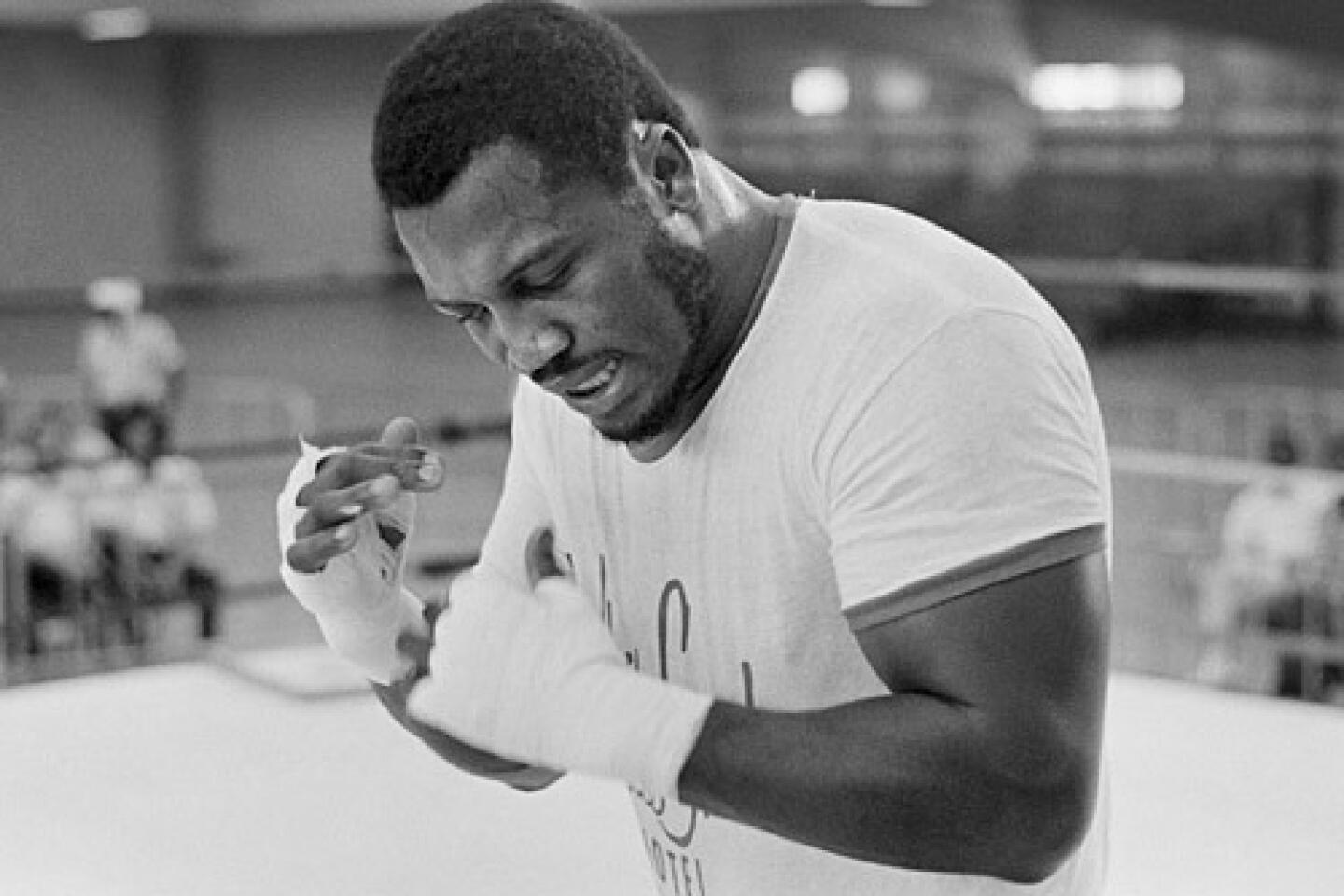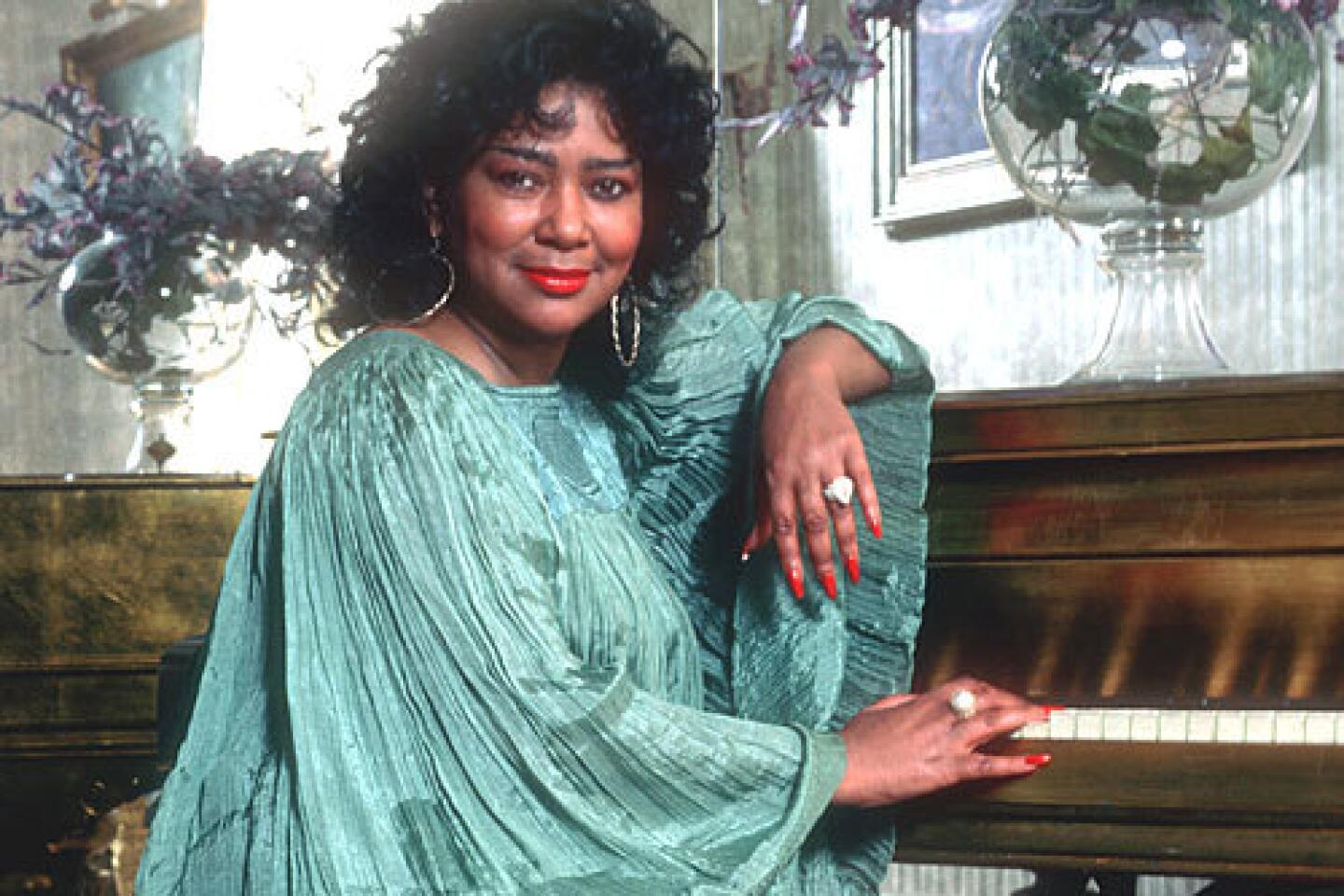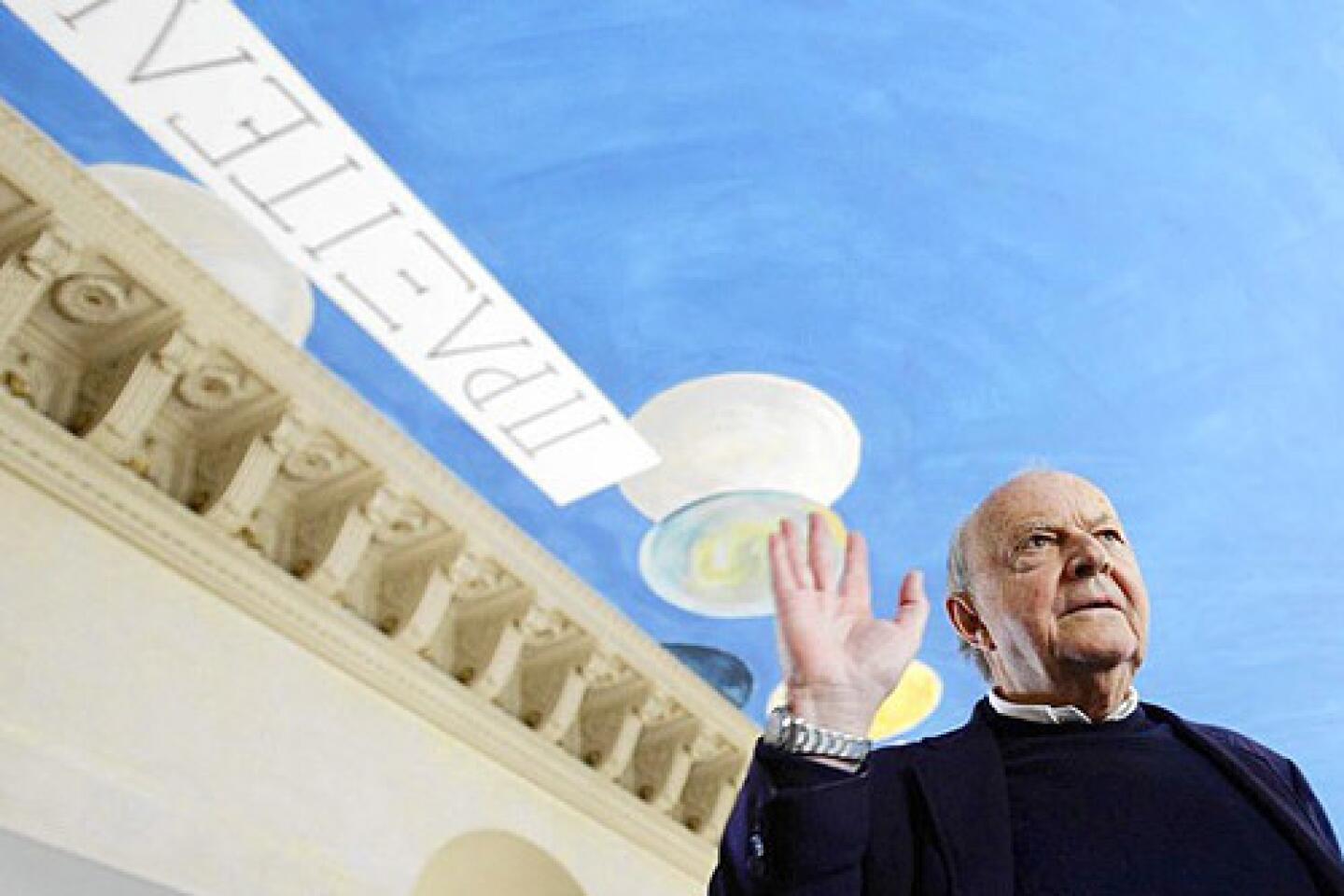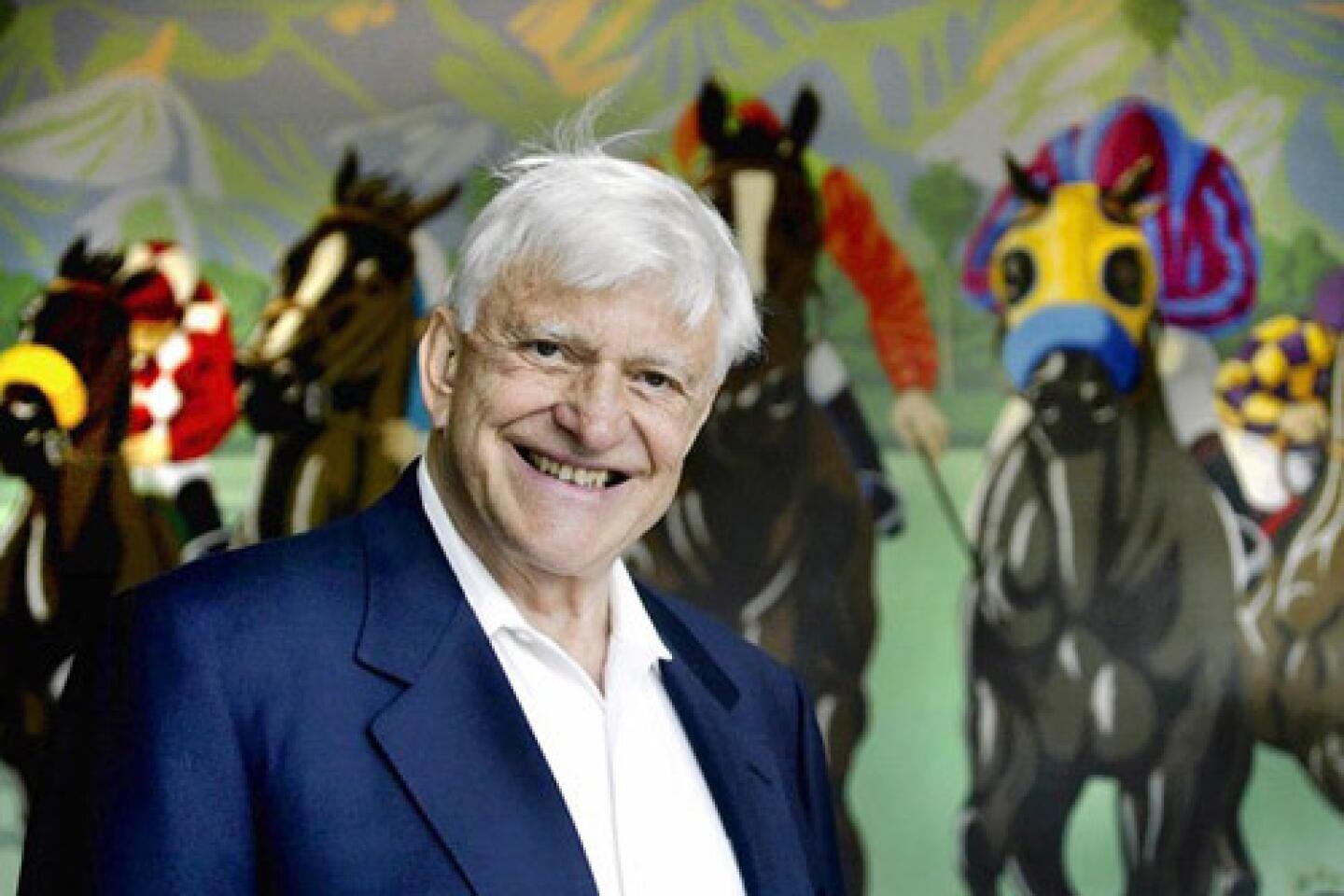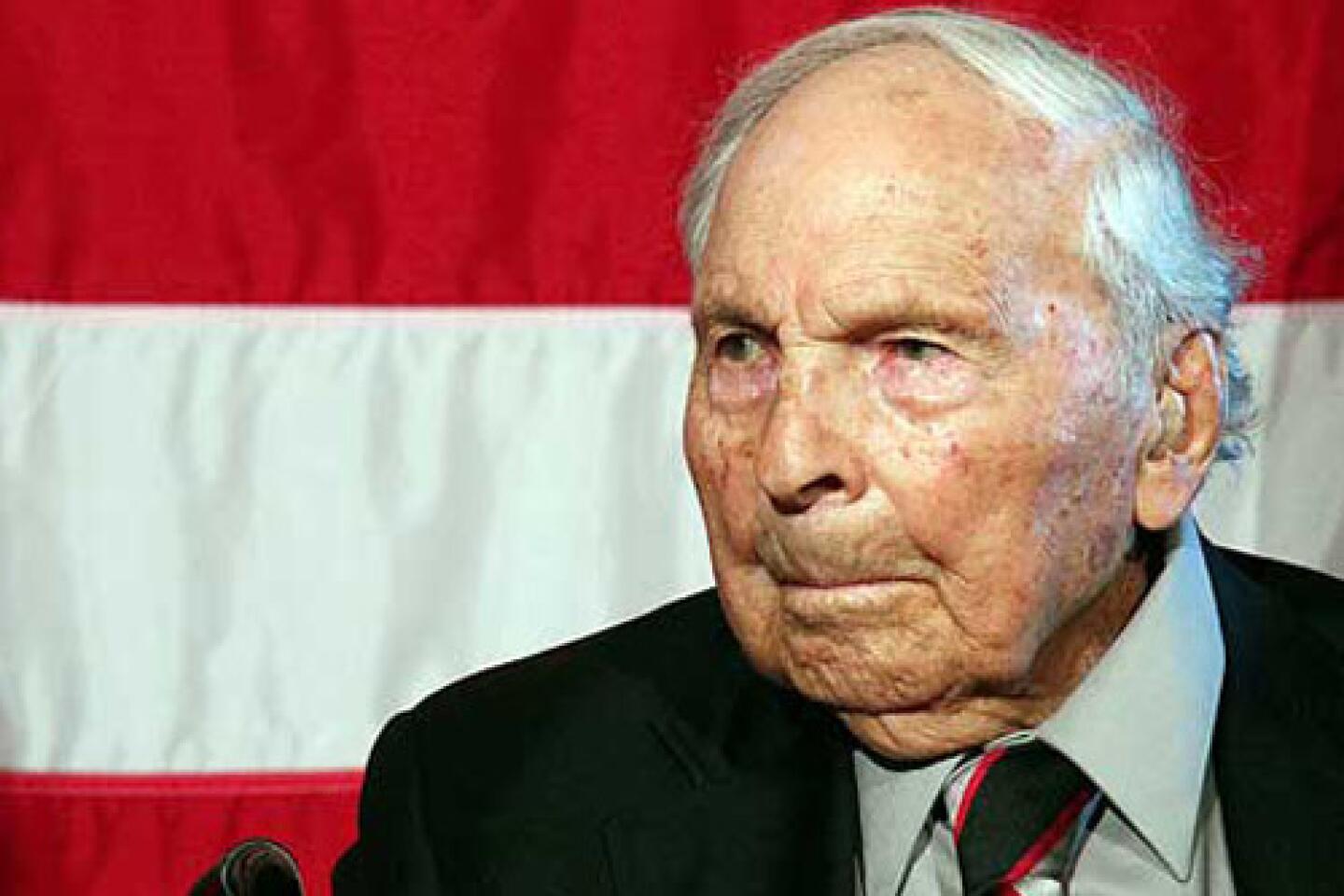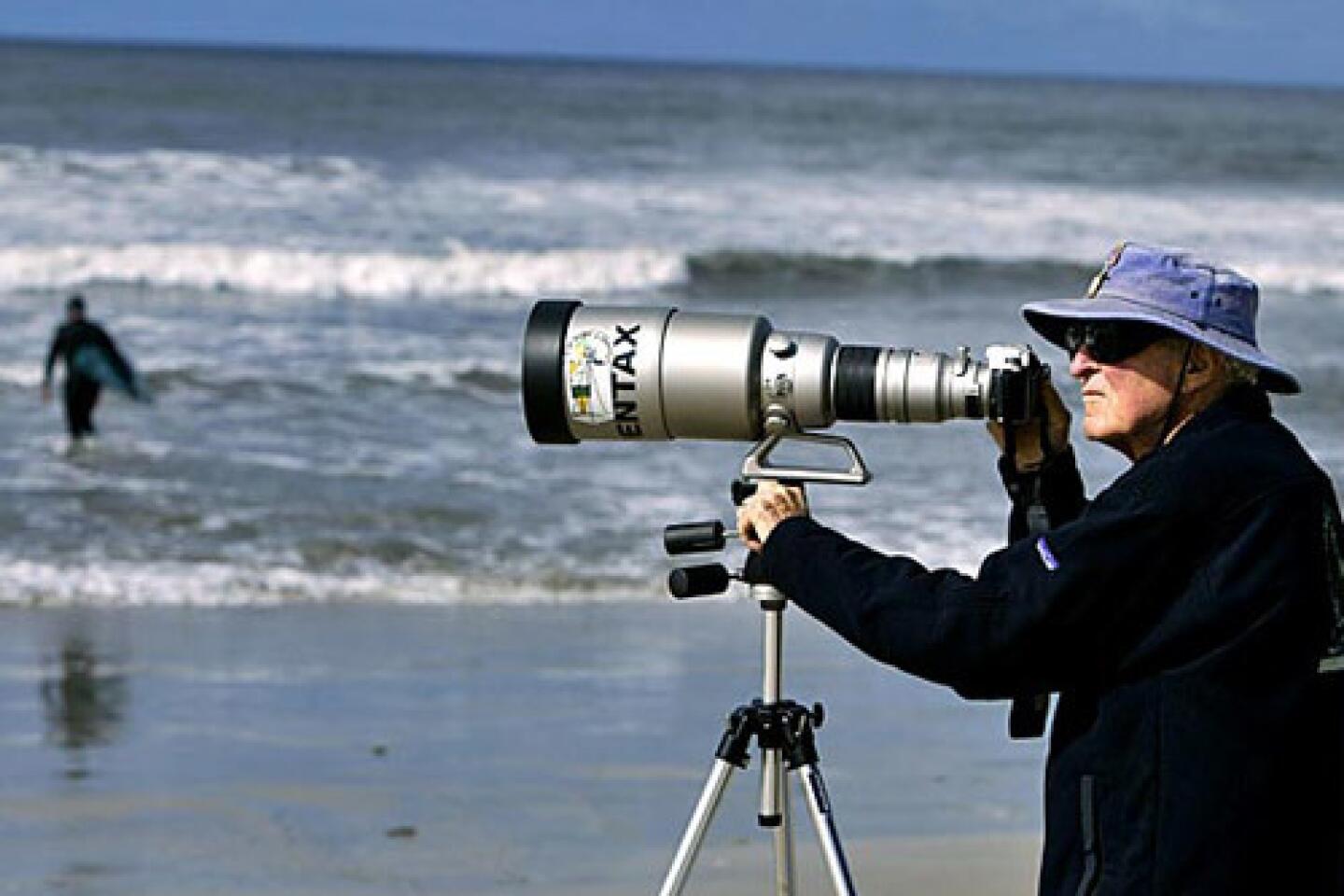Arthur C. Nielsen Jr. dies at 92; oversaw growth of ratings firm
- Share via
“If you can put a number on it,” Arthur C. Nielsen Jr. said his father once told him, “then you know something.”
It was a lesson the younger Nielsen — who died Monday at age 92 — never forgot. His lifelong efforts remade his father’s once-obscure Chicago market research firm into a sprawling, worldwide measurement giant with a brand name that, in the U.S. at least, became a household synonym for television ratings.
Today — even after his company has undergone ownership changes, not to mention weathered near-continuous industry complaints of supposedly flawed methodology — TV executives still arise before dawn to check out the Nielsens, foretelling the fate of their shows and their careers with each ratings point. In recent years, the company has expanded into measuring online traffic and other new media.
Nielsen, who in 1984 retired from the company that now simply bears his surname, had been suffering from Parkinson’s disease. He died in the Chicago suburb of Winnetka.
Earlier this year, the New York-based Nielsen Holdings N.V. — an umbrella entity that covers numerous units including the TV measurement service — issued one of the largest private-equity-backed public stock offerings in recent years, raising $1.6 billion.
In a statement, the company called the younger Nielsen “an early pioneer of the global information services industry, dedicating his life to investing in innovative ideas to understand and measure consumer purchasing and viewing behavior.”
It added that his “passion and tireless commitment to helping industries better serve consumers led to the creation of many innovations we all rely on today, including consumer and performance surveys, market share, department and food index, and television ratings to name a few.”
“Art” Nielsen was born in Winnetka on April 8, 1919, and graduated from the University of Wisconsin in 1941. During World War II he served as an officer in the Army Corps of Engineers.
Up to that time, the elder Nielsen’s company had offered mainly research on sales of dry goods and drugs. It had tried with some success to gauge the size of radio audiences during the Depression, although it was overshadowed by a powerful competitor, C.E. Hooper.
But Art Nielsen happened to join his father’s firm at an auspicious time. In the postwar years, the nascent commercial television industry was growing rapidly — 7.5 million sets were produced in 1950, compared with fewer than 200,000 three years earlier — but there was no clear and universally accepted means of telling how many people were actually watching the programs. Network executives sometimes relied on reports from Variety or from Hooper; other times they guessed how popular their shows were by weighing the bags of mail that came in from viewers. The issue was of vital interest to sponsors trying to determine whether the programs were worthy of financial support.
The Nielsens developed a system that sampled a small portion of U.S. viewers — hence the neologism “Nielsen family” — and asked them to fill out diaries recording what they had watched. (In 1987, the company switched to a “people meter” system that electronically logged what viewers watched in real time, allowing for more detailed measurements and demographic information.)
In 1950, Nielsen dubbed “Texaco Star Theater” the nation’s most-watched program, although by that time the show and its star, Milton Berle, were already sensations. But the Nielsen system caught on; the same year, the company had bought out its one-time radio rival, Hooper.
Over the years, TV executives have frequently complained about what they view as Nielsen’s stranglehold on ratings data and alleged propensity to undercount viewers; but so far, no alternative has met with wide acceptance.
Art Nielsen was considered instrumental in pushing the company to use computers and other new technologies, partly because of his Army engineering experiences. He also helped oversee Nielsen’s expansion into virtually every corner of the globe. Today the company has outposts in such far-flung spots as Bangladesh, Cameroon and Kazakhstan.
In addition to TV ratings, Nielsen Holdings has units that measure book and music sales, shopping habits, media sales and other data. Many of these units began as independent businesses that Nielsen acquired.
The elder Nielsen died in 1980.
After he retired, Art Nielsen retained an active interest in the company. He served on the board of Dun & Bradstreet, which had acquired his company in 1984 and later split it in half. Nielsen complained publicly that his father’s legacy had not been well managed by B&D. The Dutch conglomerate VNU completed a purchase that recombined the companies in 2001. After VNU was bought by a group of private-equity firms, the entire company was renamed Nielsen in 2007.
Nielsen and his late wife, Patricia, had three children: Arthur Charles II, John Christopher and Elizabeth Kingsbury (Cocciarelli). They survive him, along with seven grandchildren.
More to Read
The complete guide to home viewing
Get Screen Gab for everything about the TV shows and streaming movies everyone’s talking about.
You may occasionally receive promotional content from the Los Angeles Times.






